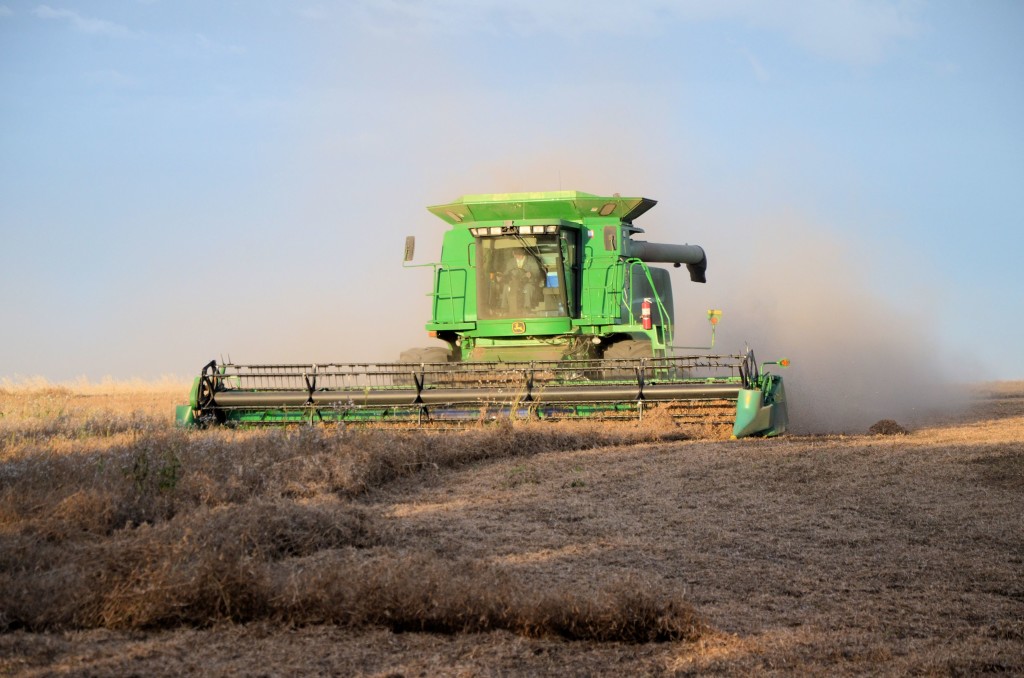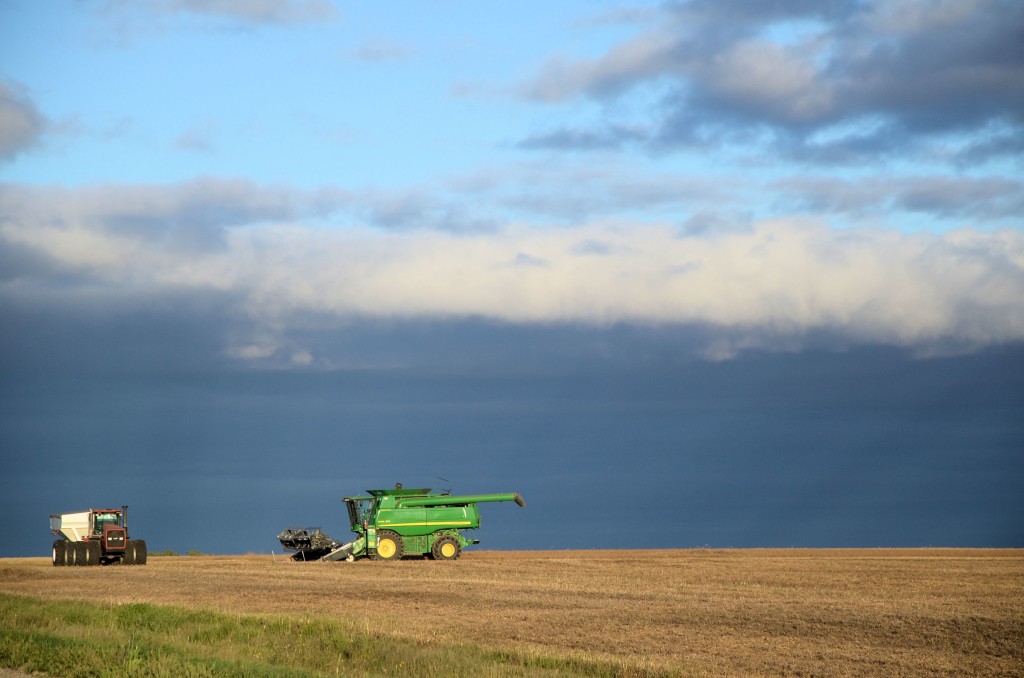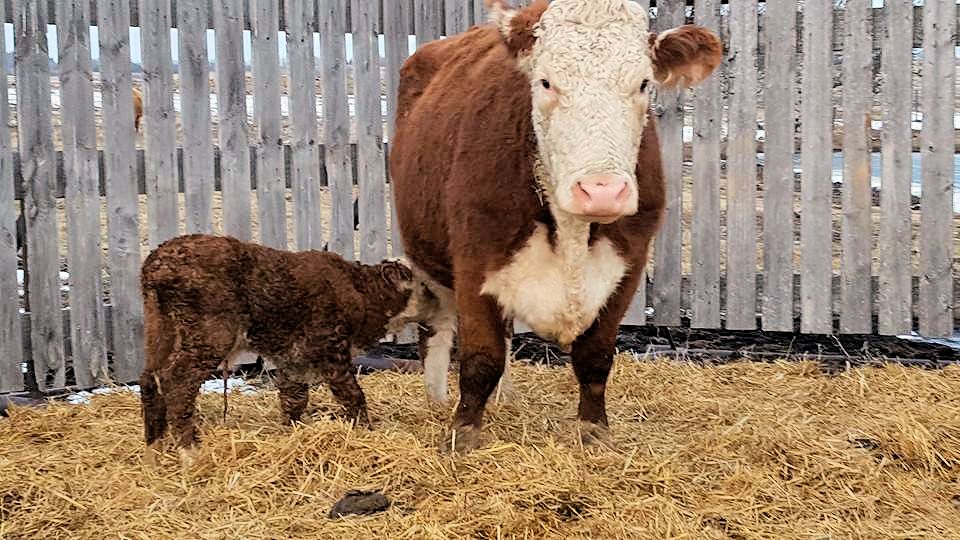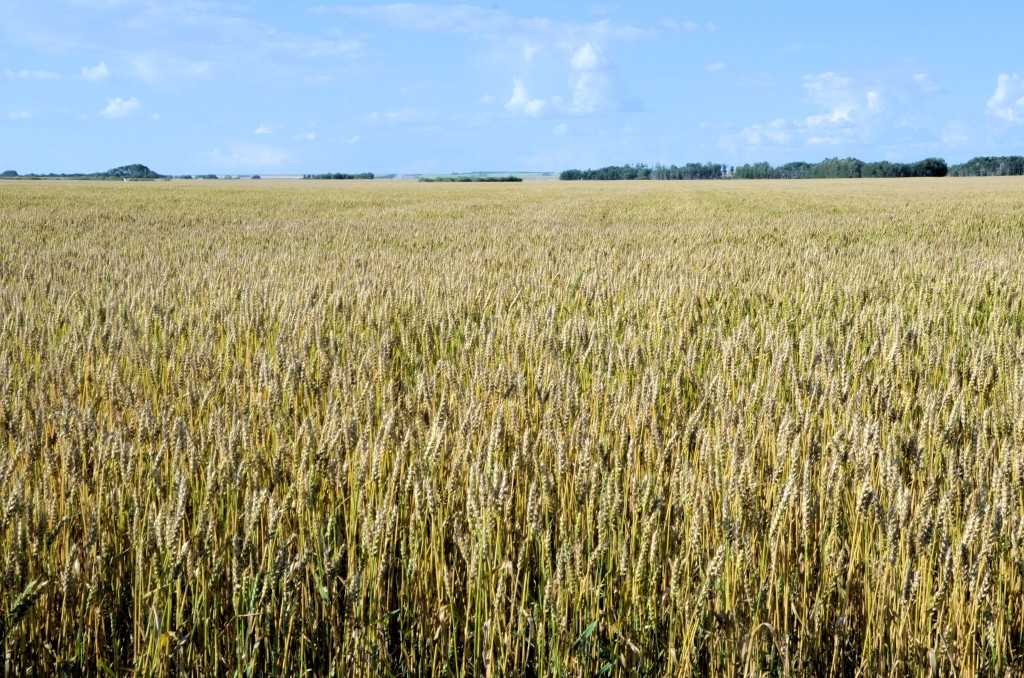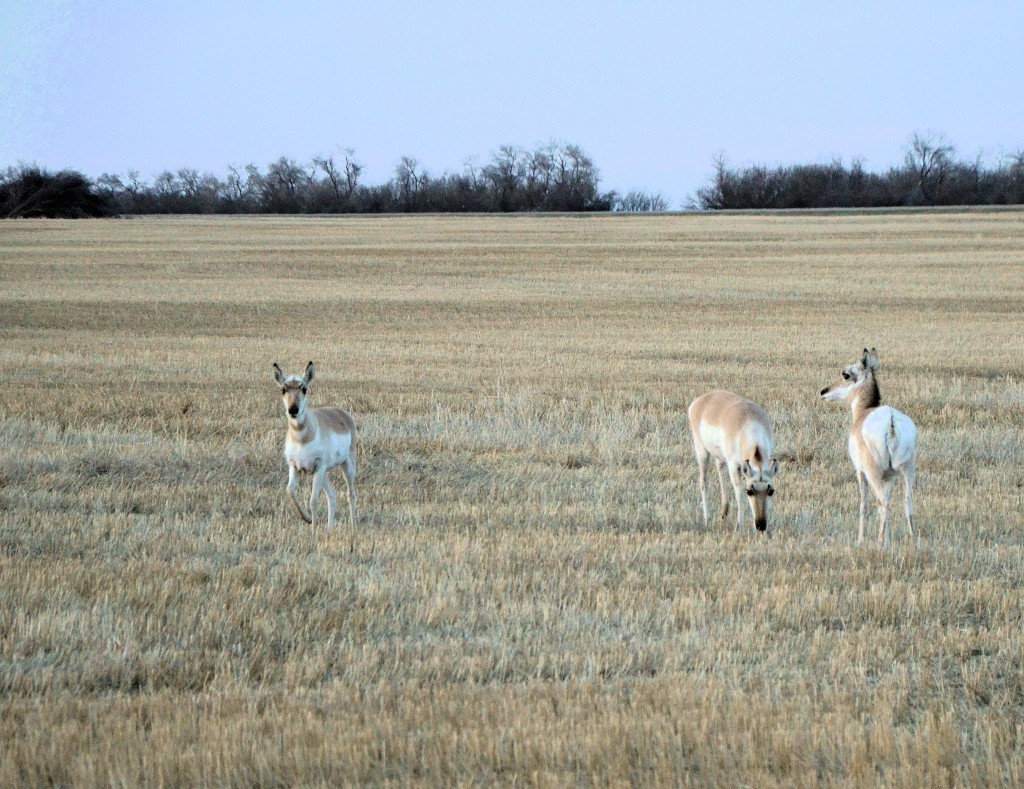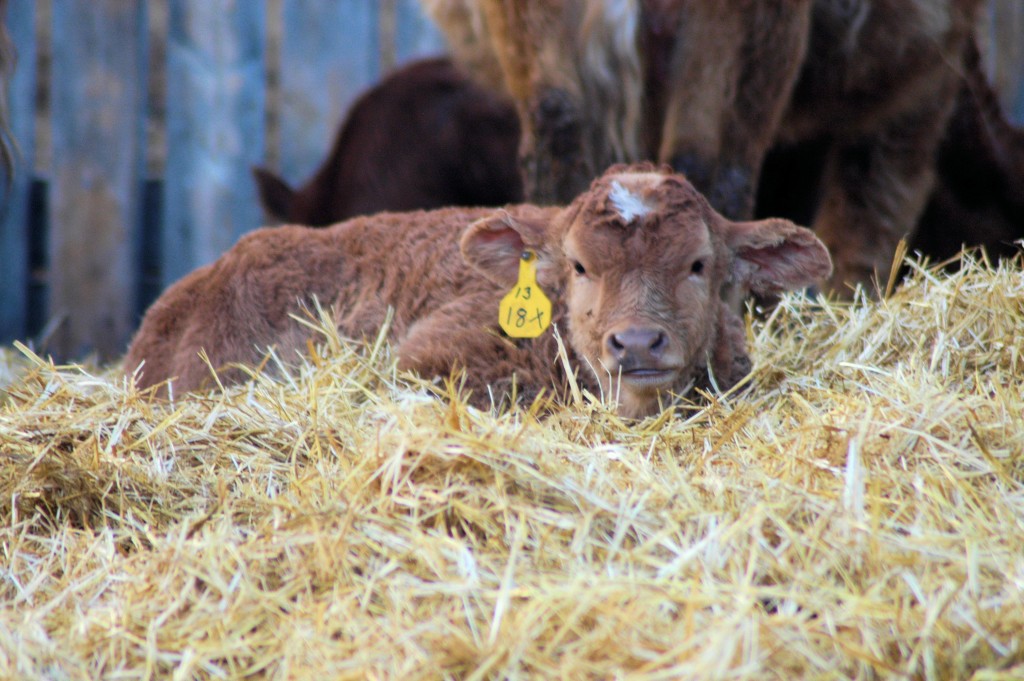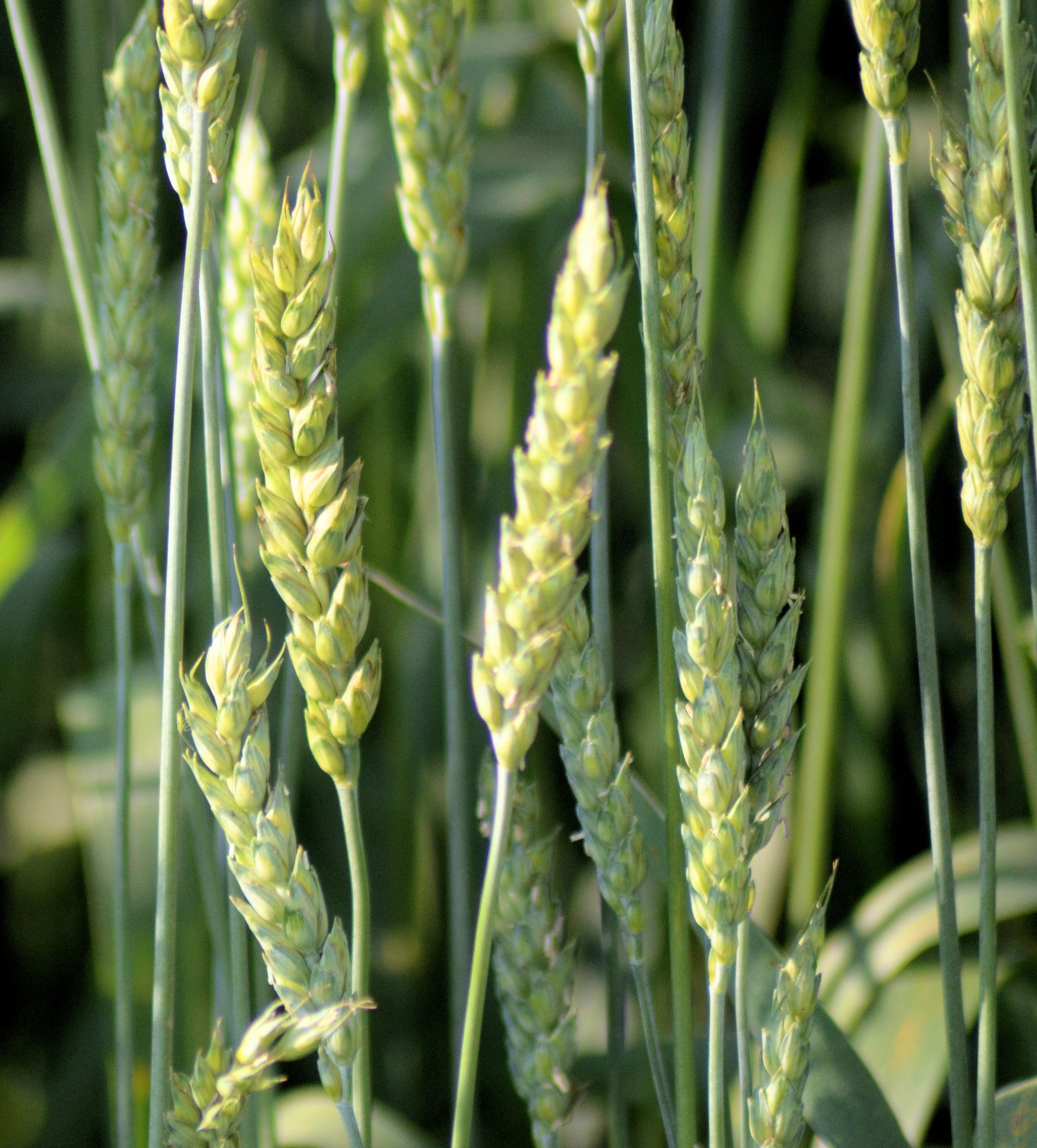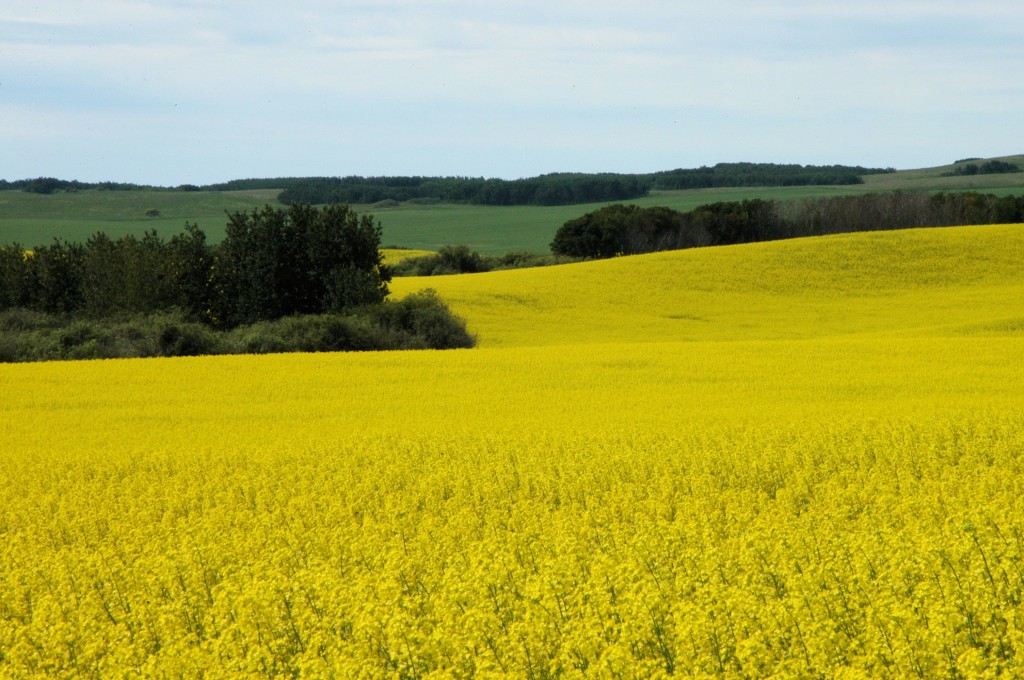The latest Saskatchewan Crop Report notes that many crops still need to develop to maturity, although as of August 18, minimal combining and some swathing had commenced. West of Unity, Saskatchewan, in the Denzil area, some canola fields have been swathed as of today, August 23, such as this field near Grass Lake.
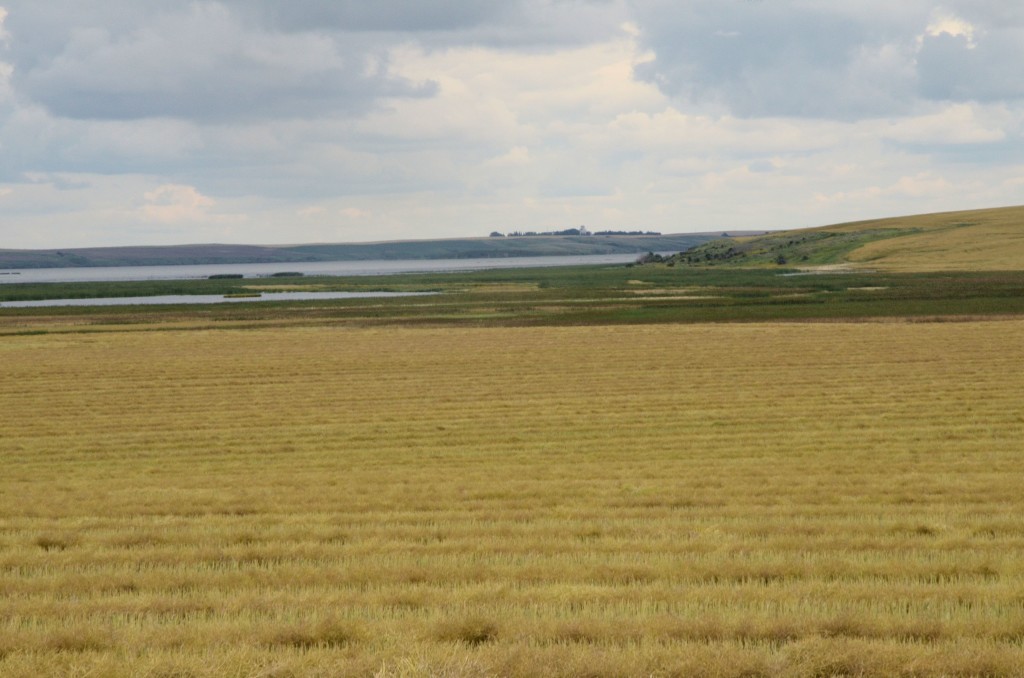
Saskatchewan Crop Report for August 12 to 18
Just over one per cent of the 2014 provincial crop has been combined, while four per cent is swathed or ready to straight-cut, according to Saskatchewan Agriculture’s weekly Crop Report. The five-year average (2009-2013) for this time of year is two per cent combined and five per cent swathed or ready to straight-cut. Harvest operations are the furthest ahead in the southwestern region where four per cent of the crop has been combined. At this time, average crop yields are being reported in most areas.
Provincially, 19 per cent of the fall rye, nine per cent of the field peas, eight per cent of the winter wheat and three per cent of the lentils are combined. Seven per cent of the canola and four per cent of the mustard are swathed. Recent warm weather has encouraged crop development; however, frequent rain showers and heavy morning dew are delaying crop maturation and harvest operations for many producers.
Rainfall this past week ranged from trace amounts to several inches in some southeastern and west-central areas. Across the province, topsoil moisture on cropland is rated as seven per cent surplus, 82 per cent adequate, 10 per cent short and one per cent very short. Hay land and pasture topsoil moisture is rated as four per cent surplus, 79 per cent adequate, 16 per cent short and one per cent very short.
Heavy rain, strong winds and hail caused the majority of crop damage this week. Grasshoppers, wheat midge, fusarium head blight and sclerotinia are also causing some damage.
Farmers are busy desiccating, swathing, combining and finishing up haying operations.
West-Central Saskatchewan (Crop Districts 6B – Hanley, Outlook, Loreburn, Saskatoon and Arelee areas; Crop District 7A – Rosetown, Kindersley, Eston, Major; CD 7B – Kerrobert, Macklin, Wilkie and Biggar areas)
Harvest is just starting in the region with producers beginning to desiccate pulses and swath canola. One per cent of the barley has been combined and five per cent of the canola has been swathed. Three per cent of the field peas and two per cent of the lentils are ready for straight-cutting. Overall, the majority of crops are behind normal development but they are quickly advancing thanks to recent warm weather. At this time, yields are estimated to be average, although there are some reports of high disease levels in pulses that will likely decrease yield and quality.
Rainfall ranged from trace amounts to 50 mm in the Kindersley area. Since April 1, the Major area has received the region’s greatest amount of cumulative rainfall at 396 mm. Topsoil moisture conditions on cropland are rated as 11 per cent surplus, 75 per cent adequate, 13 per cent short and one per cent very short. Hay land and pasture topsoil moisture is rated as nine per cent surplus, 73 per cent adequate, 17 per cent short and one per cent very short. CD 6B is reporting that three per cent of cropland acres and seven per cent of hay land and pasture acres are very short of topsoil moisture at this time.
The majority of damage this week was caused by localized flooding, strong winds and hail. In some areas, drought-like field conditions and grasshoppers have caused damage as well. Some producers are reporting high levels of sclerotinia in canola.
Farmers are busy starting harvest operations and hauling bales.

